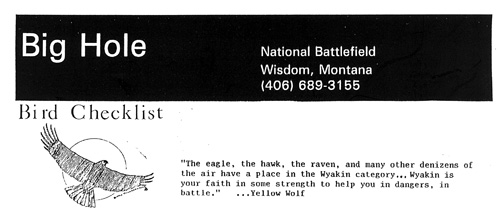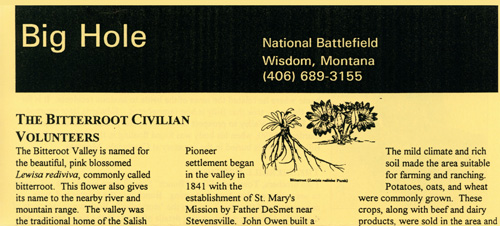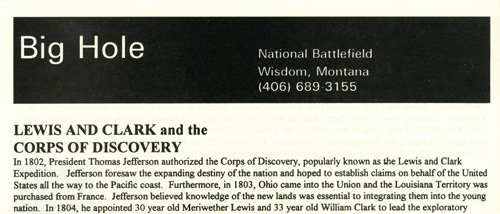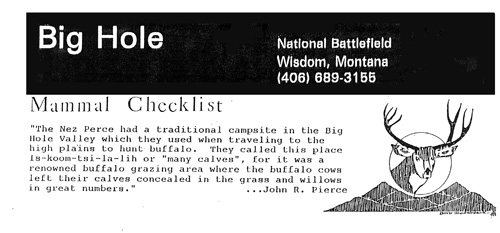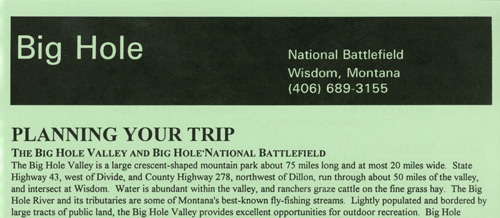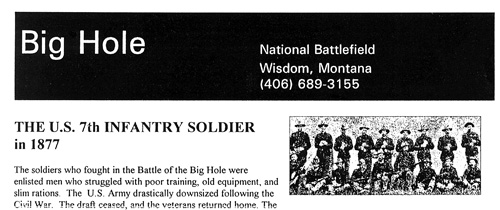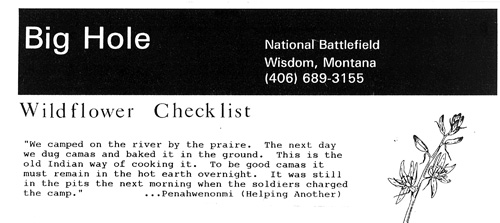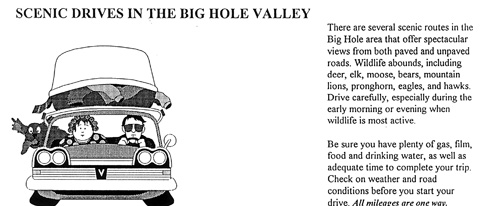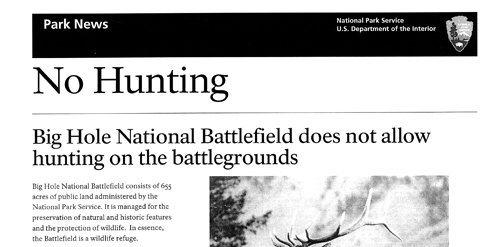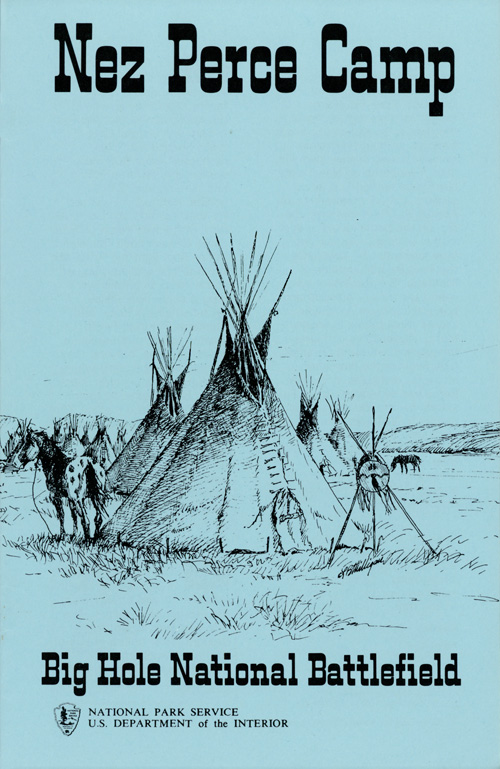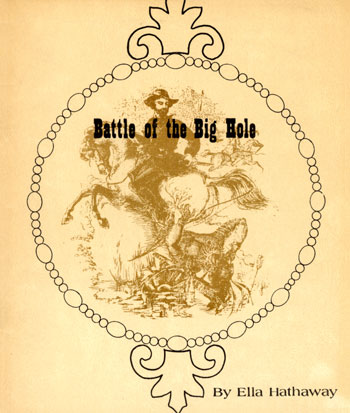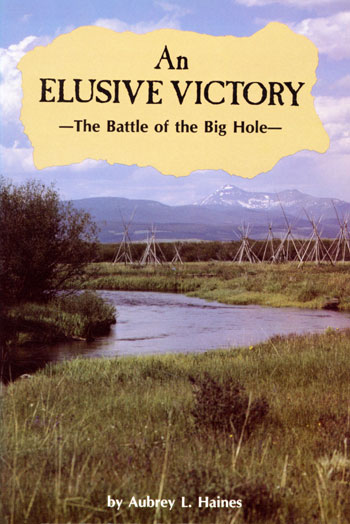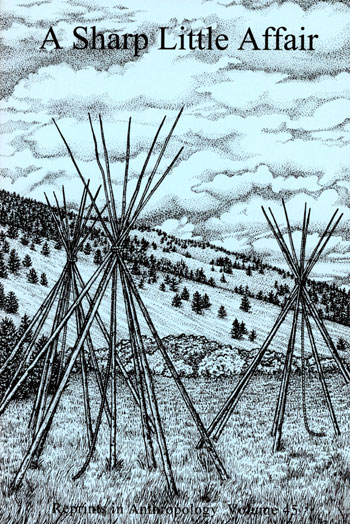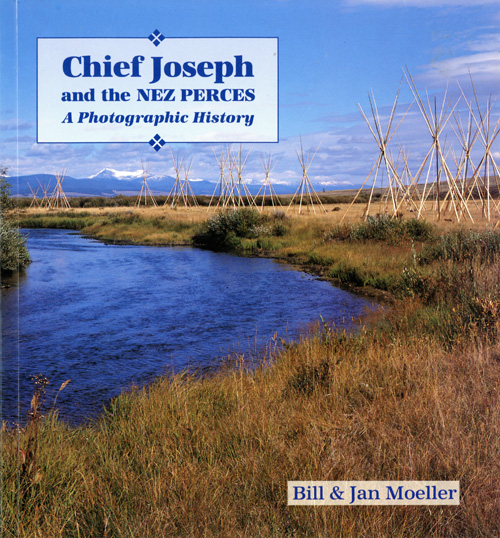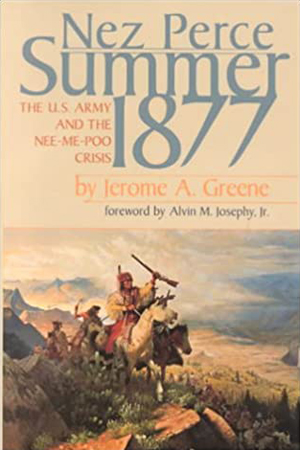|
Big Hole National Battlefield Montana |
 |
 NPS photo | |
When xist (Sharon Redthunder) brought her grandson here, she told him,
Grandson, I want you to know that you're an Indian person. Where you came from ... I want you to be aware of what our people suffered.
THE PEOPLE
The Nez Perce, whose story is told at Big Hole National Battlefield, call themselves nimí·pu· or The People. "We have been here since time immemorial," says wé-yux tí·menin (Allen Slickpoo, Jr.). "Our legends go back 9,000 years .... We didn't start with Lewis and Clark." The nimí·pu· met these explorers in 1805. At that time, tustimasatalpá·ma (Vera Sonneck) explains, "We were one of the biggest tribes in the US. We had 13 million acres of aboriginal lands. We were in what is now Idaho, Montana, Oregon, Washington, and Canada." During the next 70 years, they would lose most of their homeland to European Americans.
CONFLICTS ARISE
As European Americans began encroaching on nimí·pu· homeland, conflicts began to occur. The US government proposed a treaty in 1855: The nimí·pu· would give up over half their homeland for European-American settlement but keep the right to hunt, fish, and gather on those lands.
Five years later, gold was discovered on nimí·pu· land. This led to the 1863 treaty that decreased nimí·pu· lands by another 90 percent. Five bands of nimí·pu·, which included their allies the pelú·cpu (Palouse) and the weyí-letpu· (Cayuse), refused the second treaty. They would later become known as the non-treaty Nez Perce.
"You might as well expect the rivers to run backwards as that any man who was born a free man should be contented penned up and denied liberty to go where he pleases," said hinmató·wyalahtqit (Young Joseph), headman of one of these bands. "I have asked some of the great white chiefs where they get their authority to say to the Indian that he shall stay in one place, while he sees white men going where they please. They cannot tell me."
Descendants from his band reflect today: "Treaties divided and scattered us, both physically and spiritually. They threatened to sever our spiritual connection with the land and fostered the division of our people into Christian and non-Christian, treaty and non-treaty, and finally, tribe and non-tribe."
By 1877, the US government gave the non-treaty nimí·pu· 30 days to move onto the reservation or be put there by force. The nimí·pu· began the arduous task of gathering all of their belongings, including livestock. They lost much during the journey. Before they could reach their destination, fighting broke out.
Islá·mc (Horace Axtell) learned from his ancestors what happened next: "Settlers killed one of our young boy's father. The boys took revenge and killed some settlers, and that started the whole thing. It was OK for the settlers to kill us, but not the other way around."
And so started a chain of events that led to numerous battles during a four-month flight of over 1,000 miles. Some call this the "Nez Perce War.
My shaking heart tells me trouble and death will overtake us if we make no hurry through this land! I cannot smother, I cannot hide that which I see. I must speak what is revealed to me. Let us begone to the buffalo country!
—piyó·piyo ipciwá·tx (Lone Bird)
August 9, 1877: The Battle of the Big Hole
By early August, over 800 nimí·pu· (consisting mostly of family groups and only about 200 warriors) and over 2000 horses were passing peacefully through the Bitterroot Valley of Montana. Their leaders believed the military would not pursue them even though many had premonitions warning otherwise. The group arrived at ickumcilé·likpe (known today as Big Hole National Battlefield) on August 7. They did not know the military was close behind them. On August 8th, while the nimí·pu· were gathering supplies in the area, military scouts were observing their camp.
hími·n maqsmáqs (Yellow Wolf) described that night: "The warriors paraded about camp, singing, all making a good time. It was the first since war started. Everyone with good feeling. Going to buffalo country! ... War was quit. All Montana citizens our friends." Meanwhile Colonel John Gibbon reported "All laid down to rest until eleven o'clock. At that hour the command ... of 17 officers, 132 men and 34 citizens, started down the trail on foot, each man being provided with 90 rounds of ammunition. The howitzer [cannon] could not accompany the column .... Orders were given ... that at early daylight it should start after us with a pack mule loaded with 2,000 rounds of extra [rifle] ammunition." Tom Sherrill, a civilian volunteer from the Bitterroot Valley, told: "We were soon assembled at the foot of the hill. ... We were commanded to halt and ... we were very close to the Indian camp."
hú·hus·sus? ewyi·n (Wounded Head) told what happened before dawn August 9: "A man . . . got up early, before the daylight. Mounting his horse, he ... crossed the creek, when soldiers were surrounding the camp ... he was shot down. The sound of the gun awoke most of the band and immediately the battle took place." Corporal Charles Loynes recalled, "We received orders to give three volleys [low into the tipis], then charge—we did so. That act would hit anyone, old as well as young, but what any individual soldier did while in the camp, he did so as a brute, and not because he had any orders to commit such acts."
hími·n ilpílp (Red Wolf) described the chaos: "The women, all scared when the soldiers charged the camp, ran into the water, the brush. Any place where they could hide themselves and children. Many were killed as they ran." piná·winonmay (Helping Another) explained what she did: "I hid under some willow brush, lying like this [flat on side]. A little girl lay close, my arm over her. Bullets cut twigs down on us like rain. The little girl was killed. Killed under my arm." The soldiers were then given the order to burn the tipis.
"These soldiers came on rapidly. They mixed up part of our village. I now saw [tipis] on fire. I grew hot with anger," recalled hími·n maqsmáqs (Yellow Wolf). "Those soldiers did not last long .... Scared, they ran back across the river. We followed the soldiers across the stream .... the soldiers hurried up the bluff." Amos Buck, a civilian volunteer, told: "Here we began to throw up entrenchments. The Indians quickly surrounded us and were firing from every side, while we were digging and firing."
Colonel Gibbon recalled: "Just as we took up our position in the timber two shots from our howitzer on the trail above us we heard, and we afterwards learned that the gun and pack mule with ammunition were ... intercepted by Indians." wewúkiye ilpílp (Red Elk) also described the capture: "We saw the warriors closing in on the cannon. Three men, one from above and two below ... None of the three stopped from dodging, running forward. The big gun did not roar again."
Some warriors kept the soldiers and volunteers besieged while others raced back to camp. "I started back with others to our camp," explained hími·n maqsmáqs (Yellow Wolf). "I wanted to see what had been done. It was not good to see women and children lying dead and wounded .... The air was heavy with sorrow. I would not want to hear, I would not want to see again."
The nimí·pu· buried their dead and prepared to move. Most warriors went with the camp to protect it. The battle continued and some warriors stayed behind, including hími·n maqsmáqs (Yellow Wolf), who told: "The night grew old and the firing faded away. Soldiers would not shoot .... We did not charge. If we killed one soldier, a thousand would take his place. If we lost one warrior, there was none to take his place." Near dawn they saw a man ride up to the soldiers. "We did not try to kill him. ... The soldiers made loud cheering. We understood! Ammunition had arrived or more soldiers were coming. ... We gave those trenched soldiers two volleys as a 'Good-by!' Then we mounted and rode swiftly away."
From 60 to 90nimí·pu· were killed, with an unknown number wounded. Of the military and civilian volunteers, 31 were killed, 38 wounded.
So our people had to escape, ... had to find a way ... to take care of the dead as best they could. But it is not our way to leave our dead untended . ... We should care for them in death as we care for them in life, with love. So that's a very painful part of the Big Hole story.
—sísa·wipam (Roberta Conner)
After the Battle of Big Hole
THE BATTLE
After the battle at Big Hole, the nimí·pu· fled. Each time the military
caught up, they escaped. "Every day was struggling," said kulkulsiyeké·t
(Matthew Whitfield). "Fighting and hurrying on. Faint for food; tired
with the hard traveling . ... Little children, some of them wounded.
Women dying of wounds on the trail. Men left to die or be killed by the
soldiers and scouts because they were too old to travel further, or too
badly shot to ride."
On September 29, they camped at cáynim á·lika spa (today known as Bear Paw Battlefield) near Canada. That night wató·lin (Hair Combed Over Eyes) dreamed: "I saw the waters of the stream all red with blood of both Indian and Soldier. I saw falling from trees, frost-yellowed leaves; mingling with withered flowers and grass. ... Those leaves are dead, those flowers are dead. This tells of the end of fighting. Soon we are to be attacked for the last time. Guns will be laid down."
When I walk the battlefield it's sacred ground . ... A lot of relatives are buried there, but the memories of them are still living on. We are here today because of them. Their love for us lives in my heart.
—ipelikítemucet (Frank Andrews)
THE LAST BATTLE
The attack began the next morning and the siege lasted five days. Lt.
Woodruff recalled: "General Miles struck ... attacked and surrounded
Joseph, and after ... days of fighting ... compelled the surrender of
Joseph and all of his band, except those under White Bird, who escaped
through his lines and fled to British America."
hinmató·wyalahtqit (Young Joseph) explained why he made the choices he did: "I could not bear to see my wounded men and women suffer any longer; we had lost enough already. General Miles had promised that we might return to our own country. ... I thought we could start again. I believed General Miles, or I never would have surrendered. ... He could not have made any other terms with me at that time. ... On the fifth day I went to General Miles and gave up my gun and said, 'From where the sun now stands I will fight no more.' My people needed rest—we wanted peace."
ESCAPE TO CANADA
Those who did escape
during the battle, did so with heavy hearts. "With women's hearts
breaking, children weeping and men silent, we moved over the divide,"
said piyó·piyo xayxáyx (White Bird), "and closed our eyes upon our once
happy homes. We were wanderers on the prairie. ... The white man wanted
the wealth our people possessed; he got it by the destruction of our
people. We who yesterday were rich are beggars today. We have no
country, no people, no home." He and over 250 others made it to Canada
and safety.
EXILE
More than 400 nimí·pu· were captured at Bear Paw and considered
prisoners of war. They were sent to Kansas and then to Indian Territory
(Oklahoma). kulkulsiyeké·t (Matthew Whitfield) said: "I always think of
our slavery in Indian Territory. I cannot forget it! Held in bondage
till half our band died in that hot, flat country. Babies and children
dying. ... I can never put its memory from my mind."
SCATTERED
When finally released in 1885, hími·n maqsmáqs (Yellow Wolf) explained:
"Religion had to do with where they placed us .... The interpreter asked
us, 'Where you want to go? Lapwai and be Christian, or Colville and just
be ourself?' No other question was asked us .... Chief [Young] Joseph
was not given choice where to go. But he had promise ... he could go [to
his homeland in Oregon] with his band. That was never to be."
More than a century later, xíst (Sharon Redthunder) said, "It's something that just breaks my heart when I think of everything our people went through, and how we're so scattered. We're still scattered ... all the way to Oklahoma, Kansas, Canada, Idaho, Oregon, Washington, Montana. We're all bonded together because of our encounter we went through in 1877."
Lessons from the Tragedy
himató·wyalahtqit (Young Joseph) Treat all men alike. Give them all the same law. Give them all an even chance to live and grow .... Whenever the white man treats the Indian as they treat each other, then we shall have no more wars. We shall be ... brothers of one father and one mother, with one sky above us and one country around us .... Then the Great Spirit ... will smile upon this land, and send rain to wash out the bloody spots .... For this time the Indian race are waiting and praying."
Corporal Charles Loynes (when he was 90) As I sit retrospecting [sic] so vividly on those distant days when battles took place between your brave ancestors and my fellow soldiers, it is with saddened regret that I, and they, were compelled to carry out the orders of our superior officers, when we knew they were fighting for the preservation of their homes and the right to live their own lives, and their own religious beliefs."
sísa-wipam (Roberta Conner) This history is kept alive no matter how sad it is, no matter how much injustice and tragedy it carries. Doesn't matter. We keep it alive because if we forget this history, we forget part of our identity. This history not only has made us sad, it's made us strong, it's made us resilient.
Hope for the Future"
Rebecca Miles There's no future without forgiveness. If we can forgive, there's nothing this tribe can't do."
ipehlítemucet (Frank Andrews) Our victory is that we are still here. We are still surviving, we are going on. We still have our culture, traditions, customs, united together. Maybe one day we can share each other's different ways and ... join hands together and work for that."
temiyéwtitu·t (Albert Andrews Redstar) So to the young people, "Don't forget who you are. Learn how to pick up those drums and sing the songs that we sing, learn how to speak in the fashion of our old people. Because it's in those songs and in the speech of our people that we learn the lessons to carry our lives. Don't forget those old teachings."
tamapcáyoxayxáyx (White Hawk / John Miller) Now, all this trouble is past. It is like two different trees, young trees. Planted, they grow together their branches intertwining. Hereafter, both races, red and white are friendly always. ... That this would last as long as the world exists.
Visiting Other Battle Sites of the People's Flight
  (click for larger maps) |
White Bird Battlefield
In addition to Big Hole National Battlefield, Nez Perce National
Historical Park includes sites in four states related to nimí·pu·
history and the events of 1877. Visit White Bird Battlefield, where the
battles began, and Bear Paw Battlefield, where they ended. Learn more at
the visitor center in Spalding, ID, or on the park website. The Nez
Perce (Nee-Me-Poo) National Historic Trail also commemorates the
flight.
Canyon Creek Battlefield
The battle at Canyon Creek took place 10 miles north of present-day
Laurel, MT. Most of the battlefield site is on private property, but Nez
Perce National Historical Park maintains an outdoor exhibit at the
junction of MT 532 and 401 and provides information about the battle on
its website.
Bear Paw Battlefield
Bear Paw Battlefield is along MT 240, 16 miles south of Chinook, MT. It
is part of Nez Perce National Historical Park and is open year-round
from dawn to dusk. Outdoor exhibits explain the events of 1877. The
Blaine County Museum (www.blainecountymuseum.com) in Chinook serves as the
visitor center for the battlefield and has exhibits and a film about the
battle.
Planning Your Visit
Big Hole National Battlefield is on MT 43 between US 93 on the west and I-15 on the east.
VISITOR CENTER Open daily 9 am to 5 pm in summer; 10 am to 5 pm in winter. Closed all federal holidays in winter and spring. The battlefield is open daily, sunrise to sunset.
CAMPING AND LODGING National forest campgrounds are nearby; Wisdom, MT, has limited lodging and services. More services are available in Butte, Dillon, or Hamilton, MT, or in Salmon, ID.
FISHING AND HUNTING Montana laws apply. Ask at the visitor center or check the park website for more information.
FIREARMS For firearms regulations check the park website.
ACCESSIBILITY We strive to make our facilities, services, and programs accessible to all. For information go to the visitor center. ask a ranger, call, or check our website.
Emergencies call 911
(Limited cell phone
service.)
Source: NPS Brochure (2016)
Brochures ◆ Site Bulletins ◆ Trading Cards

Documents
A History, Nez Perce Campaign 1877: Part I (Merrill D. Beal, 1960)
A History, Nez Perce Campaign 1877: Part II (Merrill D. Beal, 1960)
A Sharp Little Affair: The Archeology of Big Hole Battlefield (Douglas D. Scott, 1994)
A Sharp Little Affair: The Archeology of Big Hole Battlefield Reprints in Anthropology Volume 45 (Douglas D. Scott, 1994 revised June 2009)
Battle of the Big Hole in August, 1877 (Ella C. Hathaway, July 1919)
Big Hole Land Exchange Socio-Economic Study (Chris Fowler, Date Unknown)
Bird Inventories of Big Hole National Battlefield, Nez Perce National Historical Park, and Whitman Mission National Historic Site 2005 NPS Natural Resource Report NPS/UCBN/NRR-2009/125 (Rita Dixon and Lisa K. Garrett, August 2009)
Camas Monitoring at Nez Perce National Historical Park and Big Hole National Battlefield
Camas Lily Monitoring Protocol Narrative NPS Natural Resource Report NPS/UCBN/NRR-2007/011 (Thomas J. Rodhouse, Mark V. Wilson, Kathryn M. Irvine, R. Kirk Steinhorst, Gordon H. Dicus, Lisa K. Garrett and Jason W. Lyon, version 1.0, October 2007)
Camas Monitoring at Nez Perce National Historical Park and Big Hole National Battlefield: 2008 Annual Status Report NPS Natural Resource Technical Report NPS/UCBN/NRTR-2008/133 (Thomas J. Rodhouse and Lisa K. Garrett, November 2008)
Camas Monitoring at Nez Perce National Historical Park and Big Hole National Battlefield: 2009 Annual Status Report NPS Natural Resource Technical Report NPS/UCBN/NRTR-2009/265 (Thomas J. Rodhouse and Jannis L. Jocius, October 2009)
Camas Monitoring at Nez Perce National Historical Park and Big Hole National Battlefield: 2010 Annual Status Report NPS Natural Resource Technical Report NPS/UCBN/NRTR-2011/430 (Thomas J. Rodhouse and Jannis L. Jocius, February 2011)
Camas Monitoring at Nez Perce National Historical Park and Big Hole National Battlefield: 2011 Annual Status Report NPS Natural Resource Technical Report NPS/UCBN/NRTR-2013/804 (Thomas J. Rodhouse and Devin S. Stucki, October 2013)
Camas Monitoring at Nez Perce National Historical Park and Big Hole National Battlefield: 2012 Annual Status Report NPS Natural Resource Technical Report NPS/UCBN/NRTR-2013/809 (Thomas J. Rodhouse and Devin S. Stucki, October 2013)
Camas Monitoring at Nez Perce National Historical Park and Big Hole National Battlefield: 2013 Annual Status Report NPS Natural Resource Technical Report NPS/UCBN/NRTR-2013/816 (Thomas J. Rodhouse and Devin S. Stucki, November 2013)
Camas Monitoring in Nez Perce National Historical Park's Weippe Prairie: 2014 Annual Report NPS Natural Resource Data Series NPS/UCBN/NRDS-2017/1079 (Devin Stucki and Thomas J. Rodhouse, January 2017)
Camas Monitoring in Nez Perce National Historical Park's Weippe Prairie: 2015 Annual Report NPS Natural Resource Data Series NPS/UCBN/NRDS-2017/1078 (Devin Stucki and Thomas J. Rodhouse, January 2017)
Commemoration and Preservation: An Administrative History of Big Hole National Battlefield (HTML edition) (Theodore Catton and Ann Hubber, 1999)
Cultural Landscapes Inventory, Big Hole National Battlefield Site (2008)
Draft General Management Plan/Environmental Impact Statement, Nez Pere National Historical Park and Big Hole National Battlefield (October 1996)
General Management Plan, Nez Perce National Historical Park and Big Hole National Battlefield (September 1997)
Land Protection Plan, Nez Perce National Historical Park and Big Hole National Battlefield (1999)
Historical Research Management Plan for Big Hole National Battlefield & Bibliography of the Nez Perce War, 1877 (Aubrey L. Haines, November 1967)
Land cover classifications for Big Hole National Battlefield, Whitman Mission National Historic Site, and Lake Roosevelt National Recreation Area using ASTER imagery NPS Natural Resource Technical Report (Gina M. Wilson, September 2006)
Land Protection Plan, Nez Perce National Historical Park and Big Hole National Battlefield (1999)
Mammal and Herpetological Inventory of Big Hole National Battlefield 2002 NPS Natural Resource Technical Report NPS/UCBN/NRTR-2009/229 (Thomas J. Rodhouse, Crystal Ann Strobl and Lisa K. Garrett, July 2009)
National Register of Historic Places Nomination Form
Big Hole National Battlefield (Alfred W. Schulmeyer, Paul L. Hedren and Susan A. Tenney, May 19, 1977, revised August 1, 1984)
Natural Resource Condition Assessment, Big Hole and Bear Paw National Battlefields of the Nez Perce National Historical Park NPS Natural Resource Report NPS/UCBN/NRR-2011/471 (Mark V. Corrao and John Erixson, December 2011)
Nez Perce Summer, 1877 - The U.S. Army and the Nee-Me-Poo Crisis (Jerome A. Greene, ©Montana Historical Society Press, 2000)
Paleontological Resource Inventory and Monitoring, Upper Columbia Basin Network NPS TIC# D-259 (Jason P. Kenworthy, Vincent L. Santucci, Michaleen McNerny and Kathryn Snell, August 2005)
Park Newspaper: 2003-4 • 2004 • 2005 • 2006 • 2007 • 2008 • 2009 • 2012
Report on Sullys Hill Park, Casa Grande Ruin; the Muir Woods, Petrified Forest, and Other National Monuments, Including List of Bird Reserves: 1915 (HTML edition) (Secretary of the Interior, 1914)
Soil Survey of Big Hole Area-Part of Beaverhead County, Montana (2007)
State of the Park Report, Big Hole National Battlefield, Montana State of the Park Series No. 1 (April 2013)
The Mountain Howitzer at Big Hole National Battlefield: A Technical and Historical Report (Mark T. Fiege, Summer 1994)
Big Hole National Battlefield Movie
Books

biho/index.htm
Last Updated: 26-Dec-2023


















